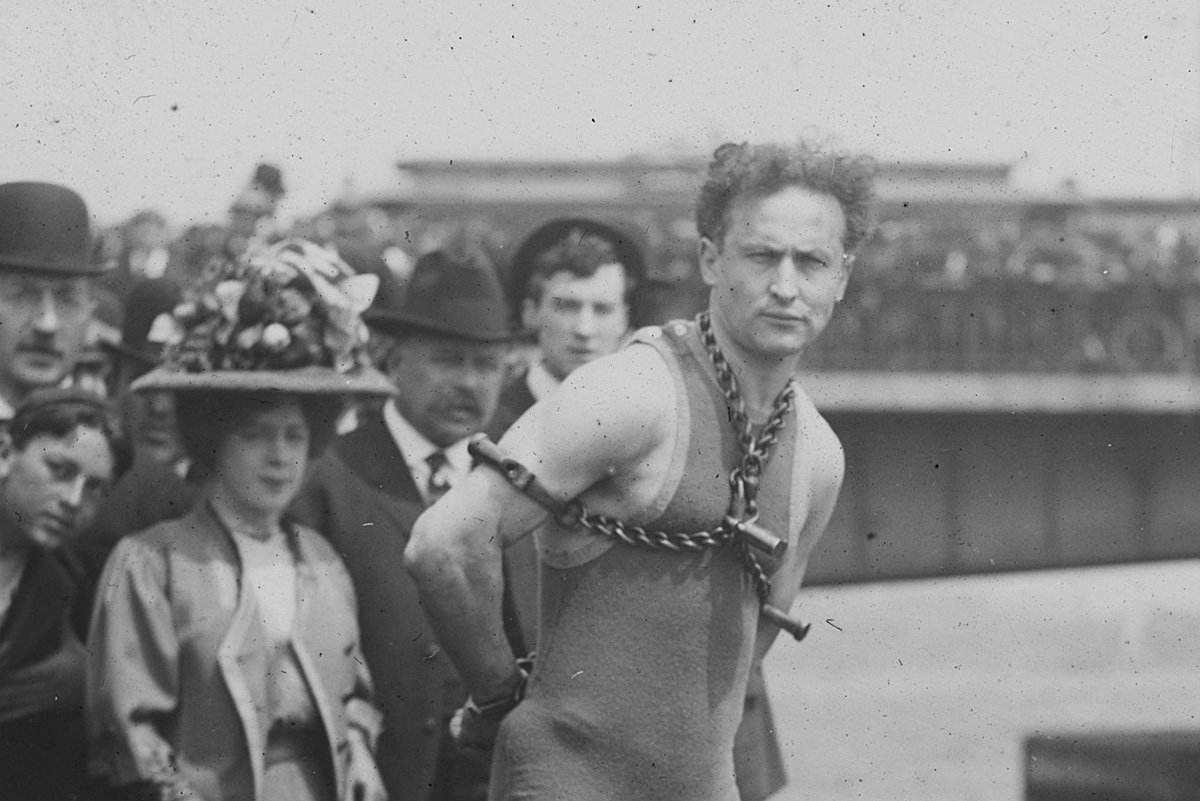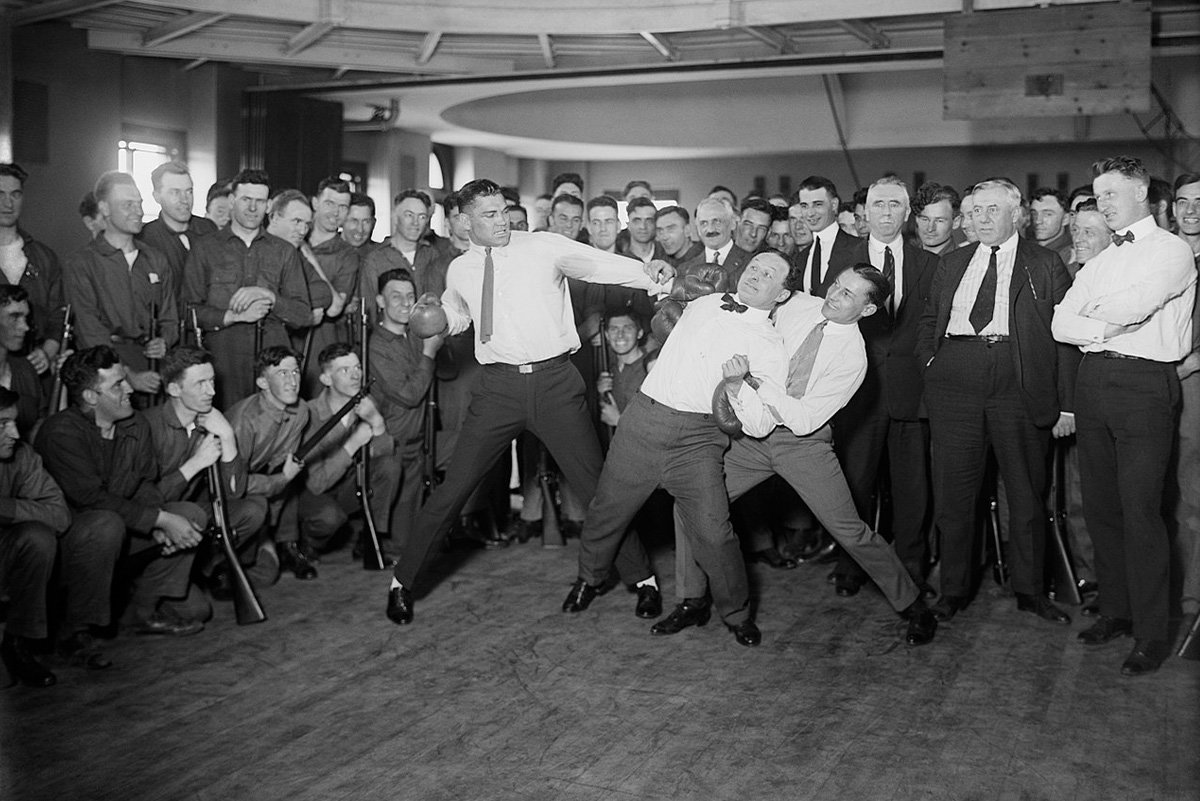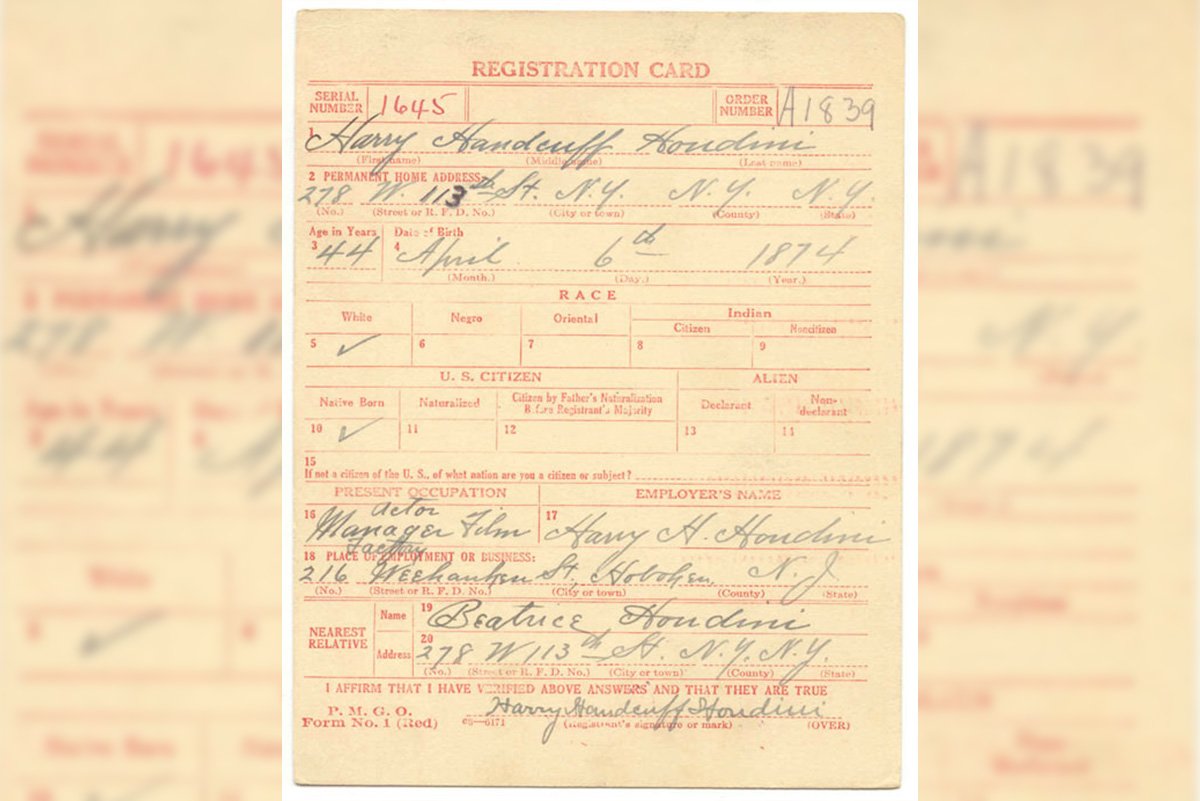The Escape Artist: How Harry ‘Handcuff’ Houdini Pioneered SERE and Spycraft

Ehrich Weiss changed his name to Harry Houdini after Jean-Eugène Robert-Houdin, the French “father of magic.” In a classic case of “never meet your heroes,” Houdini later wrote a vicious debunking of Houdin. Wikimedia Commons photos, colorized by Coffee or Die Magazine.
Harry Houdini — the magician best known for his death-defying escapes underwater, underground, and in the air — played a significant yet little-known role in the American war effort during World War I. During his time as a magician, Houdini’s performances garnered enough fame and wealth to allow him to tour the world, but when war broke out in Europe, the renowned escape artist stepped out of the spotlight to teach survival and escape techniques to American soldiers and spies.
When he was just four years old, Houdini (born Ehrich Weiss) and his four siblings emigrated from Hungary to the US with their mother. First arriving in Castle Island, New York, the day before Independence Day, 1878, they relocated to Appleton, Wisconsin, where Houdini’s father immigrated two years earlier and became the town’s rabbi.

Growing up in Wisconsin, Houdini became enamored with the traveling magicians, circus performers, and vaudeville acts that came through the town. As a child, he imitated the high-wire and trapeze artist, Jean Weitzman, going so far as to lose a few teeth while attempting his own high-wire act. In tribute to French illusionist Jean-Eugène Robert-Houdin — known as the “father of magic” — the aspiring magician changed his name from Ehrich Weiss to Harry Houdini — a name now synonymous with disappearance and escape.
An athletic and deeply competitive man, Houdini excelled as an entertainer and moved to New York City. While making a name for himself, he challenged several police departments to handcuff and jail him, but no one could contain him. His stunts grew more and more dangerous as he fought to stay ahead of his competitors. Houdini’s most famous acts included escaping from a straitjacket while suspended from a crane, an underwater escape called the “Chinese water torture cell,” and surviving being buried alive.
Houdini’s dangerous performances in New York City coincided with Theodore Roosevelt’s tenure as commissioner of the New York City Police Department. However, according to the CIA, the two public figures first met almost a decade prior during the 1893 Chicago World’s Fair. Their friendship would prove a valuable source of intelligence in the years leading up to WWI and the Russian Revolution.

During Roosevelt’s early years as president, a spy — Ivan F. Manasevich-Manuilov — infiltrated the American embassy in Moscow and stole a 1,100-page document titled, “The Cipher of the Department of State.” Luckily for Roosevelt, his friend Houdini was already traveling in Moscow.
Houdini toured around Moscow as the Czar’s “court conjurer” — a spiritual advisor and performer for the royal family — in the summer and fall of 1903. Roosevelt biographer Edmund Morris argued Houdini’s court placement gave him the opportunity to relay observations back to Roosevelt and his staff.
Houdini eventually returned to the United States, where he continued to tour the country, performing amazing feats for well-paying audiences. When the United States entered WWI, he put his lucrative career on hold and left to serve in Europe.

According to The Secret Life of Houdini: The Making of America’s First Superhero, by William Kalush and Larry Sloman, the world-famous magician felt compelled to contribute to America’s war effort.
“My heart is in this work, for it is not a question of ‘Will we win’ or ‘Will we lose.’ We must win, and that is all there is to it,” Houdini reportedly said.
Though he wasn’t firing a rifle on the front lines, Houdini saved lives by donating his nearly 25 years of knowledge and experience from performing dangerous stunts. He taught troops how to escape from sinking ships and survive high-stress situations, as well as techniques to free themselves from ropes, chains, and even German handcuffs.
Houdini also convinced the Society of American Magicians — of which he’d been a member since 1903 — to pledge allegiance to the US and President Woodrow Wilson. Their contributions proved invaluable.
“Washington magician Archie Engel became a secret agent for the Treasury Department,” a War History Online article reads. “Fellow member Dr. Charles Mendelsohn joined the cryptography department and helped decipher German codes. New York SAM member Dr. Maximilian Toch became the head of the US camouflage division.
“These men, alongside other magicians, supported the development of the signature gray coloring of the US Navy vessels.”

In 1953, magician John Mulholland published “Some Operational Applications of the Art of Deception” and “Recognition Signals” as part of the infamous MK-Ultra program. Many thought the documents were destroyed in 1973 as a casualty of the CIA’s controversial effort to hide evidence of MK-Ultra, but Robert Wallace, a former director of the CIA’s Office of Technical Services, found some deteriorated copies in 2007.
Wallace, alongside intelligence historian Keith Melton, collected all the documents in the CIA archives referencing magic and published the collated material as “The Official CIA Manual of Trickery and Deception.” Magicians, through writing these manuals, guided CIA agents in crafting smuggling devices, gadgets, and other covert tools.
“Even the Office of Strategic Services, the CIA’s WWII predecessor, was inspired by Houdini when they created tiny tools that mirrored those first used by the magician in his concealed escape kits,” according to the CIA.

Houdini died on Halloween day, 1926, in Detroit from peritonitis caused by a punch to his stomach that ruptured his appendix. The King of Cuffs is best remembered for his daring escapes and captivating performances, but Houdini’s legacy lives on through the invaluable lessons he gave service members almost 30 years before the US military founded the first Survival, Evasion, Resistance, and Escape (SERE) school, and through the disappearing ink, magic paper, and hollowed-out shoes that saved spies amid the political turmoil of the 20th century.
Since his death, October 31 is sometimes referred to as “National Magic Day” or “Houdini Day,” in remembrance of the legendary American.
Read Next:

Lauren Coontz is a former staff writer for Coffee or Die Magazine. Beaches are preferred, but Lauren calls the Rocky Mountains of Utah home. You can usually find her in an art museum, at an archaeology site, or checking out local nightlife like drag shows and cocktail bars (gin is key). A student of history, Lauren is an Army veteran who worked all over the world and loves to travel to see the old stuff the history books only give a sentence to. She likes medium roast coffee and sometimes, like a sinner, adds sweet cream to it.
BRCC and Bad Moon Print Press team up for an exclusive, limited-edition T-shirt design!
BRCC partners with Team Room Design for an exclusive T-shirt release!
Thirty Seconds Out has partnered with BRCC for an exclusive shirt design invoking the God of Winter.
Lucas O'Hara of Grizzly Forge has teamed up with BRCC for a badass, exclusive Shirt Club T-shirt design featuring his most popular knife and tiomahawk.
Coffee or Die sits down with one of the graphic designers behind Black Rifle Coffee's signature look and vibe.
Biden will award the Medal of Honor to a Vietnam War Army helicopter pilot who risked his life to save a reconnaissance team from almost certain death.
Ever wonder how much Jack Mandaville would f*ck sh*t up if he went back in time? The American Revolution didn't even see him coming.
A nearly 200-year-old West Point time capsule that at first appeared to yield little more than dust contains hidden treasure, the US Military Academy said.












